Ever wondered which miter saw blade is the best pick: a 80 or 100 tooth one? With so many options out there, it can be hard to make the right choice. Luckily, we’ve put together this ultimate showdown – pitting an 80 tooth miter saw blade against a 100 tooth version – to help you find the perfect fit for your project! In this guide, we’ll explore the differences between these two types of blades, answering common questions and providing useful tips to help make your decision easier. So get ready to learn everything you need to know about the ultimate showdown: 80 vs. 100 tooth miter saw blades!
What is a Miter Saw?
The miter saw blade can be adjusted to cut at different angles. This makes it ideal for trimming the ends of boards and creating corner joints, such as for picture frames or crown molding.
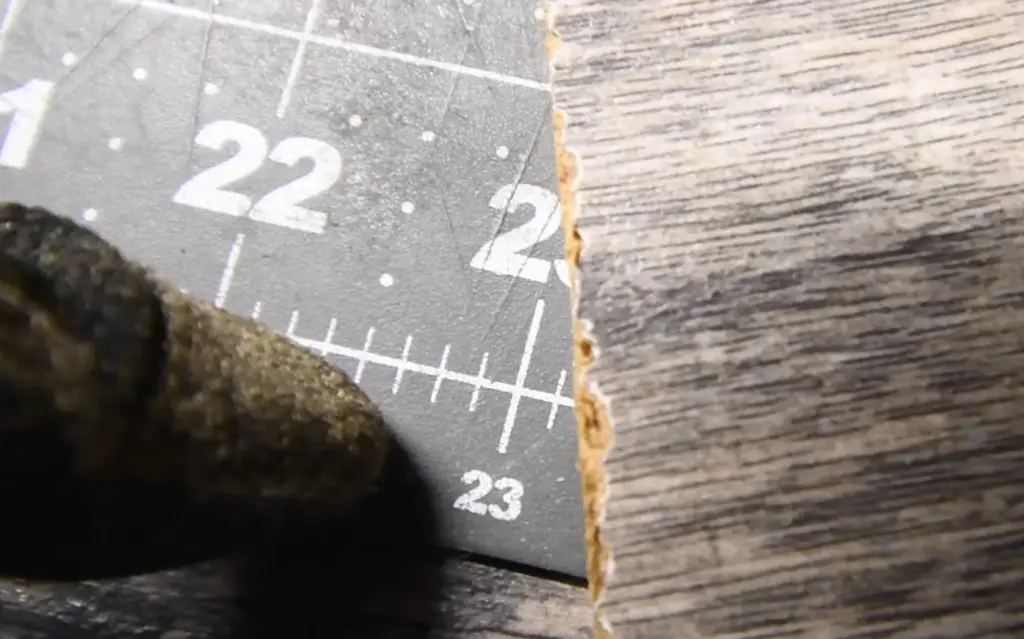
Miter saws typically feature an adjustable fence with positive stops at commonly used angles such as 45° and 90°, allowing quick setup time when making multiple cuts of the same angle. Many higher-end models include features like digital readouts that display cutting angles for greater accuracy.
Miter saws come in several sizes, ranging from small handheld models to large bench-mounted saws. The most common models are the 10-inch compound miter saw, which can make both bevel and miter cuts, and the 12-inch sliding compound miter saw, which is thinner and has a longer blade for making deeper crosscuts. [1]
Does the Number of Teeth on a Miter Saw Matter
Yes, the number of teeth on a miter saw does matter. The number of teeth on a miter saw determines how smoothly and quickly it cuts through material. If a blade has more teeth, it will make smoother and faster cuts. On the other hand, fewer teeth will produce rougher cuts that may require additional sanding or finishing work to achieve an acceptable finish.
The type of material being cut also plays a role in determining the optimum number of miter saw teeth. Softer materials such as wood can typically be cut with blades that have fewer teeth without sacrificing quality, while harder materials like aluminum require blades with more teeth for better results. Additionally, blades with more teeth tend to generate less dust than those with fewer teeth, making them a better choice for materials such as laminates and plastics.
The size of the blade also affects the number of teeth needed to get optimal performance. A larger diameter blade will require more teeth than a smaller one in order to produce a smooth cut. Additionally, blades with greater tooth counts may require slower cutting speeds since they can generate more heat during operation.
Finally, it is important to consider the overall cost when selecting a miter saw blade. Generally speaking, blades with higher numbers of teeth are more expensive and tend to be used for specialized or high-precision applications where accuracy is paramount. [1]
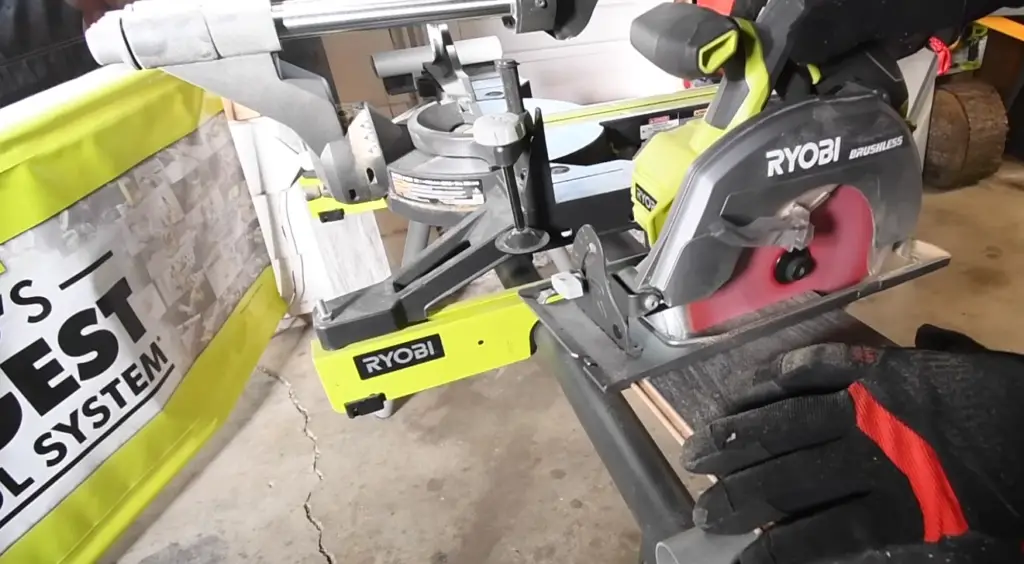
Overview of 80-Tooth Miter Saw Blade
The 80-Tooth Miter Saw Blade is a specialty blade designed to provide an extremely smooth, precise cut when performing mitered cuts. This blade has more teeth than standard blades and utilizes a unique alternating top bevel (ATB) grind that produces a clean finish on woods, plastics, aluminum, and even laminates. Its 0.098-inch kerf width allows for efficient material removal while maintaining the highest level of accuracy possible.
The ATB grind also helps reduce heat build-up during use which can extend the life of your saw blade. In addition to its precision cutting abilities, this miter saw blade features laser-cut stabilizers for reduced vibration and noise for quieter operation. Additionally, each tooth is coated with a titanium-based finish to provide maximum life when cutting harder materials. All of these features make the 80-Tooth Miter Saw Blade an excellent choice for professionals and DIYers alike who demand the highest quality results from their miter saws.
This blade is compatible with most 10-inch miter saws, making it an excellent choice for those looking to upgrade from their standard blades. With its superior sharpness, precise cutting ability, and added durability, the 80-Tooth Miter Saw Blade will help you get your projects done quickly and accurately. [1]
Overview of 100-Tooth Miter Saw Blade
The 100-Tooth Miter Saw Blade is a type of saw blade designed to make precise and clean cuts in wood, plastic, metal, and other materials. It features an ultra-thin kerf for minimal material waste and improved cutting speed. The teeth are laser cut for accuracy and the carbide tips ensure long lasting sharpness. The blade is ideal for making mitered, rabbeted and beveled cuts on wood or aluminum stock up to 3/4″ thick. It has all the power you need to make long straight line cuts quickly and accurately while also producing smooth rounded edges with every stroke.
This blade delivers higher efficiency than most standard blades and also produces less dust during operation due to its triple chip grind design. Its versatility makes it an excellent choice for a variety of projects, from cutting intricate patterns and shapes to making radius cuts on molding or window trim. With its high-quality construction, the 100-Tooth Miter Saw Blade can easily handle toughest jobs without hesitation. Regardless of your application, you’ll find this saw blade to be up for the challenge!
The 100-Tooth Miter Saw Blade is available in a variety of sizes that fit most common miter saws and radial arm saws. It also comes with a 5/8″ diamond knockout arbor hole so you can use it with select routers and other tools as well. Whether you’re a professional carpenter or an avid DIYer, this durable saw blade is an essential tool to have in your arsenal.
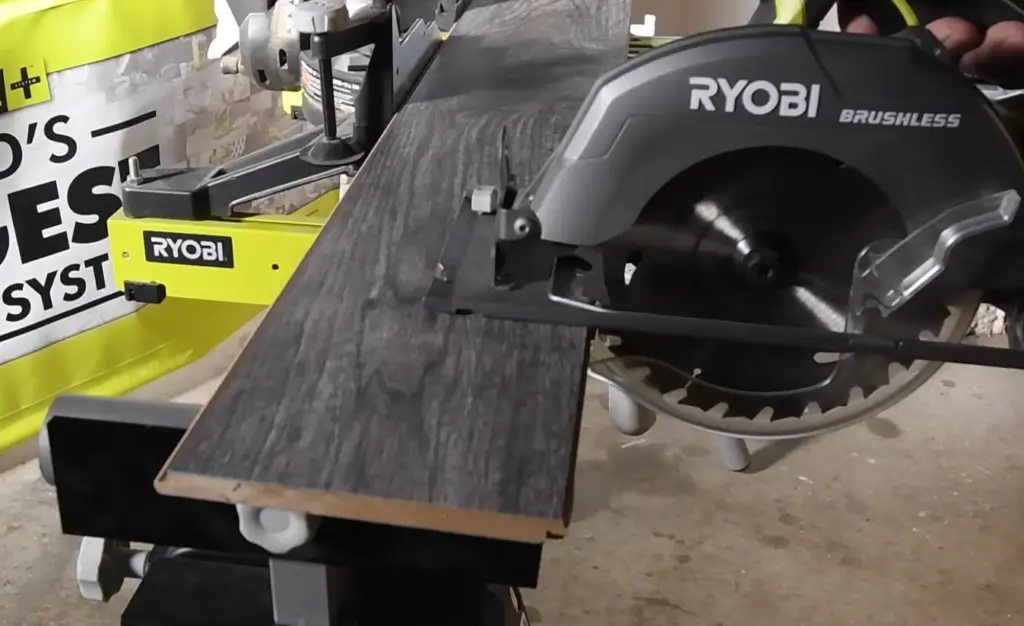
The 100-Tooth Miter Saw Blade has a variety of features that make it an excellent choice for any job. It comes with a 40° hook angle and 0° rake angle for improved cutting speed, precision, and accuracy. Its laser cut ultra-thin kerf reduces material waste while its triple chip grind design minimizes dust production during operation. The blade also features precision ground carbide teeth for long lasting sharpness and performance. [1]
Differences Between 80 and 100 Tooth Miter Saws
As you can see both the 80-Tooth and 100-Tooth Miter Saw Blades offer excellent cutting results with their own range of advantages. In this section we will discuss the differences between the two blades in order to help you make an informed decision on which one is best for your project.
Tooth Count
The most obvious difference between these two blades is the tooth count. The 80-Tooth Miter Saw Blade has 80 teeth, while the 100-Tooth Miter Saw Blade has 100 teeth. A higher number of teeth on a miter saw blade will result in a smoother cut. This is because more teeth means that each one slices a smaller piece of material which helps to ensure a cleaner cut and less sanding afterwards.
However, the less teeth you have the faster the resulting cut will be. This is something to bear in mind if you are looking for a quicker solution as the 80-Tooth Miter Saw blade may be better suited to this purpose.
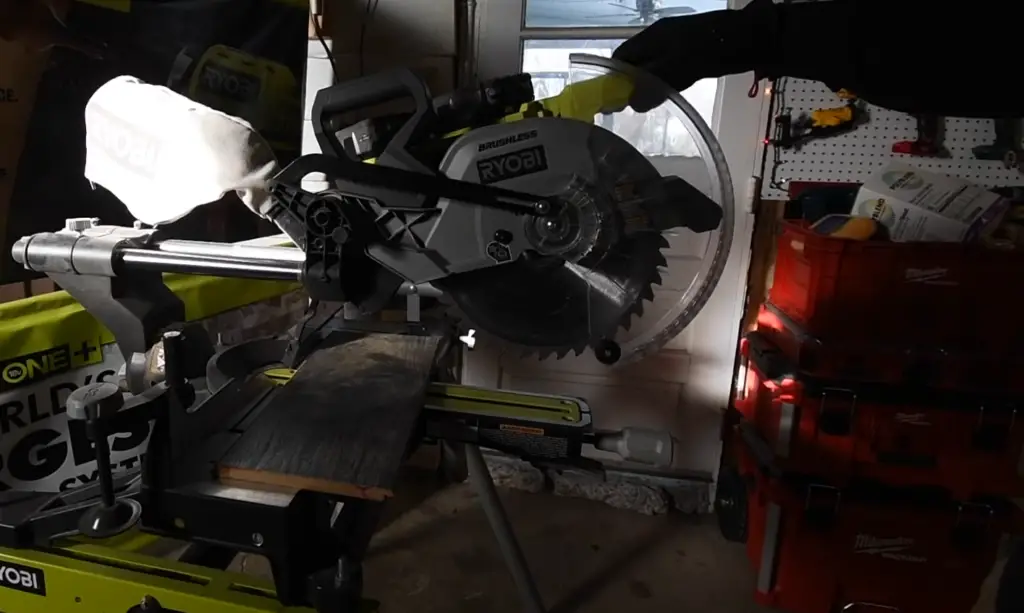
Functionality
Another difference between the two miter saw blades is the type of functionality they offer. The 80-tooth blade offers a more aggressive cut with its deeper gullets and wider tooth design, which makes it ideal for rough cutting applications such as trimming work or replacing window frames. Molding is also easy to cut with a 80-Tooth Miter Saw Blade due to its precision and accuracy.
On the other hand, the 100-tooth blade provides a cleaner finish with its shallower gullets and finer tooth pattern, making it perfect for delicate cuts that require precision such as crown molding or picture framing.
Price
Price usually plays an important role when it comes to making a purchasing decision. The 80-Tooth Miter Saw Blade is typically less expensive than its 100-Tooth counterpart and may be a more budget friendly option for those who do not require the finer finish that the 100 Tooth blade offers.
However if you search well enough, you may be able to find a 100 Tooth Miter Saw Blade at a reasonable price. [1]
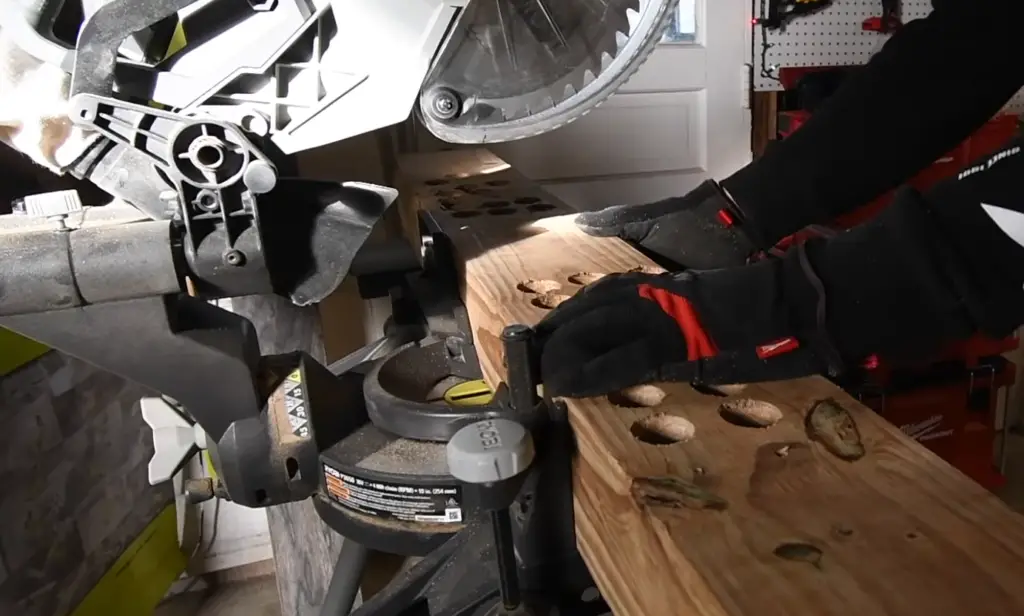
FAQ
Is it better to have more teeth on a mitre saw blade?
Generally speaking, having more teeth on a miter saw blade is better because it provides a smoother and finer cut. A 80-tooth miter saw blade has fewer teeth than a 100-tooth blade, so the 80-tooth blade will make rougher cuts. On the other hand, the 100-tooth blade will make cleaner and more precise cuts.
The accuracy of your work depends on the type of material you are cutting (wood, plastic, metal) as well as what your project requires. If you’re finishing carpentry or woodworking projects that require fine detail and clean edges, then using a 100-tooth blade would be preferable. However, for rough framing or plywood cutting, a 80-tooth blade would work just fine.
What is the advantage of more teeth on a saw blade?
More teeth on a saw blade give it greater cutting accuracy and speed. The more teeth, the smoother the cut will be because there are more points of contact with the material being cut. This means that if you’re looking for a highly precise finish, then opting for a 100 tooth miter saw blade is your best bet. Additionally, the higher number of teeth also results in faster blade rotation, allowing you to complete projects quicker and with less effort.
The downsides to opting for a 100-tooth model are generally related to cost and maintenance: typically these blades will require more frequent sharpening than 80-tooth models due to their finer edges and thus may not last as long overall. However, if precision is paramount for your project, then this is a worthwhile tradeoff.
The speed on the 100-tooth blade may also be slower than other blades, depending on the material being cut. This is mainly due to the extra effort needed for each tooth to make contact with the material, so if you’re looking for faster cuts then a lower tooth count model might be better.
Is it better to have more teeth on a miter saw blade?
Generally speaking, the more teeth a miter saw blade has, the better the cut. A higher tooth count creates smoother, straighter cuts and reduces splintering and chipping of the material being cut. However, there are tradeoffs between having more teeth on a miter saw blade and other factors such as blade width and speed.
In general, a finer-tooth count is better for finish work that requires very precise cuts, while a larger-tooth count works better for fast cutting of thicker materials. It all comes down to your particular project needs: if you’re looking for smooth cuts with minimal splintering, an 80 or 100 tooth miter saw blade might be best; but if you need speed and don’t mind a slightly rougher cut, you might want to opt for a lower tooth count.
To sum up, when it comes to miter saw blades the best choice depends on your particular project needs: if you need precise cuts with minimal splintering, an 80 or 100 tooth blade might be best; but if you need fast cutting of thicker materials, then go for a lower tooth count. Ultimately, it’s up to you to decide which option will work best for your specific situation.
What is the best tooth count for a miter saw blade?
The best tooth count for a miter saw blade depends on the type of job you are planning to do. Generally, a 80-tooth blade is considered suitable for most jobs that require precise cutting, such as trimming and finishing work. It will produce a smooth finished edge with minimal tear out or chipping. However, if you’re looking for an ultra-smooth cut in materials like wood veneer or melamine, a 100-tooth blade may be more suitable. This type of blade produces much finer cuts than an 80-tooth model and can reduce sanding time significantly.
Speed of the cut is also an important factor to consider when choosing between a 80-tooth and 100-tooth blade. A 100-tooth blade will generally move through material faster than its 80-tooth counterpart, which can be beneficial for larger projects where speed is of the essence. However, if you’re working on smaller scale jobs that don’t require a large amount of cuts, an 80-tooth blade may be more suitable as it offers greater control and accuracy over each cut.
It is ultimately up to personal preference when deciding between a 80 or 100 tooth miter saw blade; however, it is important to keep in mind the type of job you are performing and other factors such as speed and precision when making your decision.
What is an 80-tooth saw blade used for?
An 80-tooth saw blade is generally used for making precise cuts on wood and other soft materials. This type of saw blade has a higher tooth count which allows it to cut fingers with less chipping or splintering than blades with fewer teeth. The extra number of teeth also helps reduce the amount of dust produced while cutting, making it ideal for use in production environments where lower levels of airborne particulates are desired. Additionally, an 80-tooth saw blade can be used to make clean crosscuts and miter cuts without altering the material’s natural grain pattern.
What is a 100-tooth saw blade used for?
A 100-tooth saw blade is generally used for making extremely precise cuts in materials such as hardwood, plywood, and other laminates. This type of saw blade has a very fine tooth structure, which produces a thinner kerf and minimizes chip out when cutting. Additionally, the increased number of teeth interacts with the material being cut to produce smoother finishes than those produced by fewer teeth blades.
However the bigger amount of teeth also means it will take longer for the spin of each tooth to cut through the material, making this type of saw blade better suited for applications where extreme accuracy is desired.
Useful Video: 24 teeth vs. 60 teeth Saw Blades
Conclusion
Miter saws are an essential tool for accurate and precise cuts. The choice of miter saw blade makes a big difference in the quality and accuracy of the cut, as well as in how easy it is to make these cuts.
In this epic guide, we’ve compared the 80 tooth miter saw blade and the 100 tooth miter saw blade. We’ve looked at their characteristics and advantages as well as their disadvantages to help you decide which one is better for your needs.
Ultimately, choosing between an 80 tooth or 100 tooth miter saw blade comes down to personal preference and what kind of projects you want to tackle. For most DIYers, an 80-tooth blade can provide good results with less vibration while still offering plenty of cutting power.
On the other hand, if you’re looking for exceptional precision and don’t mind investing more time into setting up your cuts, then a 100 tooth miter saw blade might be the best option for you. No matter which one you choose, proper maintenance and sharpening are essential to keep your miter saw blade functioning properly. With this knowledge, you’re now ready to make an informed decision on which miter saw blade is right for you. Happy woodworking!
References
- https://99powertools.com/80-vs-100-tooth-miter-saw-blade/






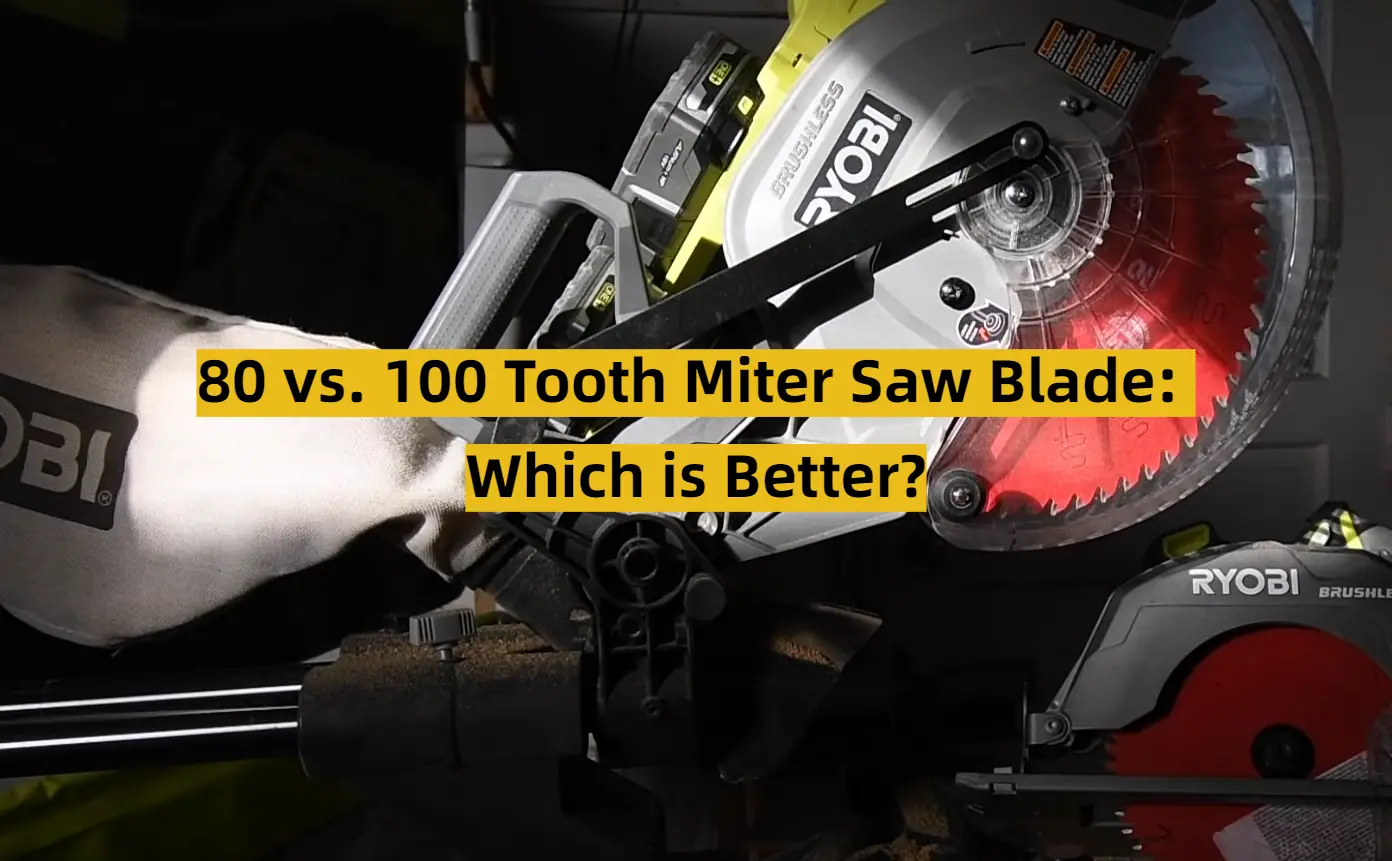






Leave a Reply